#1st-3rd centuries AD
Photo
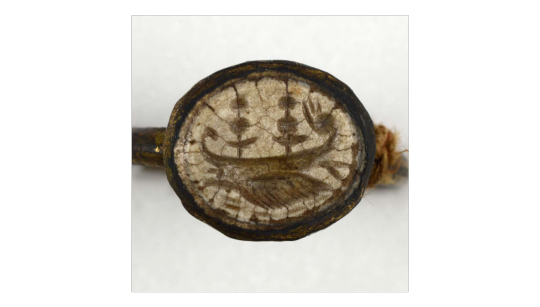
Burnt agate gem engraved with a roman galley, 1st- 3rd century AD
133 notes
·
View notes
Text
Cave of Letters: Probably the Most Important Cave In Ancient Jewish History | Ancient Origins
Cave of Letters: Probably the Most Important Cave In Ancient Jewish History | Ancient Origins
https://www.ancient-origins.net/ancient-places-europe/cave-letters-0017480

View On WordPress
#104 AD#124 AD#1960s#1st century#2nd century#3rd Jewish Revolt#Aramaic#Babatha#Bedouin#Bronze Age#Cave of Letters#Dead Sea#Dead Sea Scrolls#Eleazar bar Hitta#En-Gedi#Hebrew#Israel#Jerusalem#Jewish#Jordan#Judaism#Judean Desert#Maoza#Masabala#Nahal Hever#Qumran#Simon Bar-Kokha#Sukkot#Ta&039;amireh Tribe#Tekoa
1 note
·
View note
Photo


Egyptian mosaic glass PNGs
(3rd century BCE — 1st century AD)
8K notes
·
View notes
Text
me: hm, feeling kind of down, wish something would cheer me up :(
ancient roman enamleled owl brooch c. 1st-3rd century AD: 8>
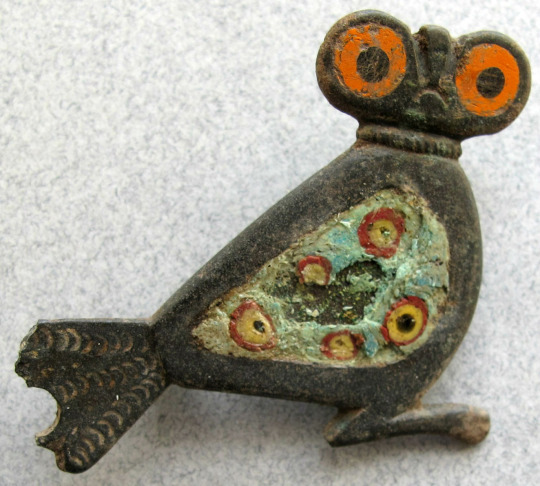
me: :)
#tagamemnon#i love him so much. big ol eyes......#queueusque tandem abutere catilina patientia nostra
4K notes
·
View notes
Text

Gold earrings with pearls, Roman, 1st -3rd century AD
from The RISD Museum
532 notes
·
View notes
Text
I don't bring up politics and world events up on here very much, that isn't what this blog is about. This blog is for escapism from reality, but those who are not willing to speak out against brutality are complicit. And this is my largest platform.
Don't continue reading if you don't want to read about war and violence.
Regarding Israel and Palestine I have seen many inaccurate assumptions and outright lies.
1ST CLAIM: One claim I hear ad nauseum is that Gaza elected Hamas and therefore they deserve punishment.
Let's break this down.
A. Hamas was elected around 2006. 17 years ago. They have not allowed elections since.
B. Roughly half of the Gazan population are under 18. This means half the population wasn't born during the last election. This means that of the Gazans who were alive many were too young to vote.
C. Hamas won by a 45 percent plurality, not a majority. This means that less than half of the Gazan who did vote did so for Hamas.
So taking these facts together we can conclude that only a fraction of a fraction of Gazans alive today elected Hamas.
In fact Netanyahu was happy to fund and prop up Hamas because doing so meant dividing Palestinians between the Palestinian Authority in the West Bank and Hamas in Gaza. So Netanyahu is more to blame for Hamas than Palestinians are.
2ND CLAIM: Another thing I hear a lot is that this conflict and all of the casualties are the fault of Hamas. Let me be clear, I do not support Hamas or the October 7th attack that ended up with a civilian casualty rate of around 50 percent, but that one attack doesn't exist alone or without context and nuance as many on the pro-Israel side would have people believe.
No, that attack was one incident in a line of many. Starting with the brutal apartheid, displacement, and ethnic cleansing of Palestinians by Israel.
A slow motion genocide taking place over the course of many decades.
Let's look at some events leading up to and then following Oct. 7th.
It starts with the beginning of Israel. Even the often recited phrase "a land without people for a people without land" erases the existence of native people who had lived there for centuries.
In 1948 you have The Nakba. A mass displacement of Palestinians as Israel took their land. This flew in the face of the UN partition plan, after The Nakba Israel controlled 78 percent of the land, 25 percent more than the UN plan.
This trend of land theft has only continued.
Let's fast forward to more recent events.
2018-2019 The Great March of Return: For over a year there were peaceful marches protesting the Gaza border, this resulted in Israeli forces killing over 220 peaceful Palestinian protesters.
In 2019 Netanyahu admitted support for Hamas to prevent a 2 state solution.
In 2022 journalist Shireen Abu Akleh was targeted and killed by Israeli forces. Israeli forces also attacked her funeral.
Note that during this entire time Palestinians are arrested, even children, and kept in indefinite detention without trial.
In 2023 we then have the October 7th attack. But as you are now aware this isn't where the conflict started.
And clearly not where it has ended.
3RD CLAIM: And that brings us to the 3rd and most blatantly bullshit lie you will here on repeat. The notion that Israel only targets Hamas.
More UN workers have been killed in a 2 month period than have died in any other war since the UN's formation. Over 130.
If they were targeting Hamas then why have so many UN buildings, refugee camps, and hospitals been bombed?
If there goal wasn't civilians then why do civilians make up the majority of the casualities?
Why the medieval style siege/blockade that has caused hospitals to lose fuel and medicine and civilians to go hungry and thirsty?
Why parade civilians around in their underwear? Why laugh and cheer as a UN school is exploded?
Why leave babies in the NICU and force the hospital staff to leave with the promise an ambulance would be provided for the babies only for people to return once the IDF left and find the baby corpses rotting because the ambulance was never provided?
We can even leave Gaza to prove this is not about Hamas. Hamas does not lead the West Bank. And yet Palestinians there are being murdered and arrested at increased rates, their homes stolen by illegal settlers.
Israel officials have called this the Gaza Nakba, they have claimed they will make Gaza inhospitable, they have claimed there are no civilians in Gaza.
Netanyahu has said to remember Amalek.
What is Amalek? Amalek refers to Israels enemy in the bible. This phrase specifically, "Now go, attack the Amalekites and totally destroy all that belongs to them. Do not spare them; put to death men and women, children and infants, cattle and sheep, camels and donkeys"
Israel wants to steal the little land the Palestinians have left. Even now they are herded and concentrated into ever smaller camps with no resources.
Idk what we can do about the situation. This post seems silly for all the good it will do. But maybe it will open the eyes of a couple people. I think that would make it worth it.
287 notes
·
View notes
Text
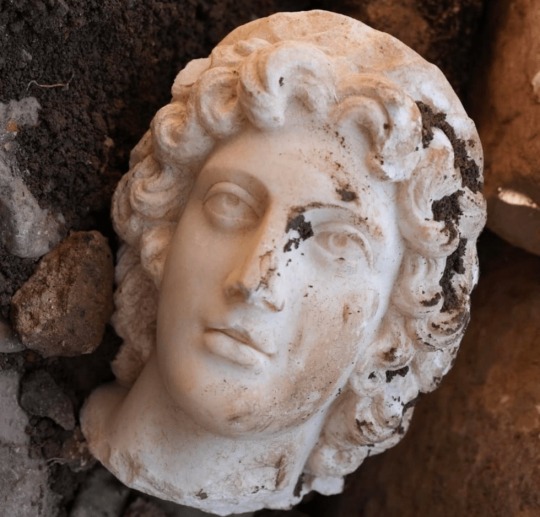
Marble Head of Alexander the Great Uncovered in Turkey
The head of a statue determined by archaeologists to belong to Alexander the Great, was unearthed during excavations in north-western Turkey.
The marble head, dated to the 2nd century AD, was found at the top of a theater in the ancient city of Konuralp, near modern-day Düzce.
While most parts of the ancient theater have been unearthed during the excavations, similar historical remains such as the head of the Apollo statue and the head of Medusa were previously found in the upper part of the structure.
During the excavations carried out in the Konuralp Ancient Theater excavation area, archaeologists identified an artifact in the ground at the top of the theater area. As they kept digging, they removed the artifact, which appeared to be the head of a bust.
As a result of the consultation of history experts, it was determined that the bust head found belonged to the Macedonian King Alexander the Great.
In a statement, Konuralp Museum provided information about why they determined the bust to belong to Alexander the Great.
“The head, measuring 23 centimeters [from head to neck] was found during the excavations in the ancient theater. It is depicted with deep and upward-looking eyes made of marble, drill marks on the pupil and a slightly open mouth that does not show much of its teeth.
“His long curly hairstyle up to his neck and two strands of hair [Anastoli] in the middle of his forehead are like the mane of a lion. This depiction is a hair type typical of Alexander the Great,” the statement said.


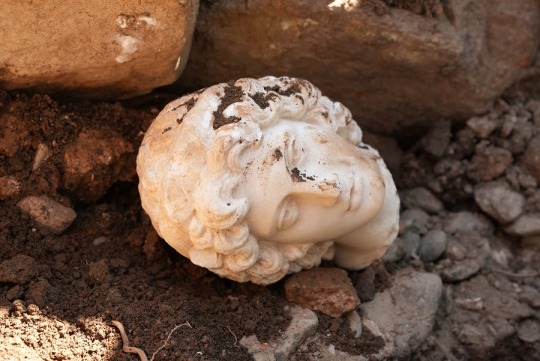
The marble head of Alexander the Great delivered to Konuralp Museum
Historical Konuralp is 8 km north of Düzce; first settlements there go back to 3rd century BC. Until 74 BC, it was one of the most important cities belonging to Bithynia, which included Bilecik, Bolu, Sakarya, Kocaeli.
It was conquered by Pontus and then by the Roman Empire. During the Roman period, the city was influenced by Latin culture, and it changed its name to Prusias ad Hypium. Later on Christianity affected the city and after the separation of the Roman Empire in 395, it was controlled by the Eastern Roman Empire (the later Byzantine Empire).
In 1204, the Crusader armies invaded Constantinople, establishing the Latin Empire. Düzce and its surroundings are thought to be under the dominance of the Latin Empire during this period. Düzce was under Byzantine rule again from 1261 to 1323.
The Konuralp Museum has some rare exhibits. A 1st-century sarcophagus, Orpheus mosaic, the mosaic of Achilles and Thetis and the 2nd-century copy of Tyche and Plutus sculpture are among the notable items in the museum. There are 456 ethnographic items.
In the ethnography section clothes, weapons, and daily-usage articles about the late Ottoman era are exhibited. There are also 3837 coins from Hellenistic to Ottoman era.
By Tasos Kokkinidis.
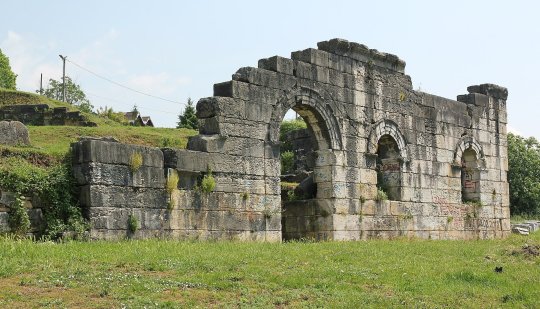

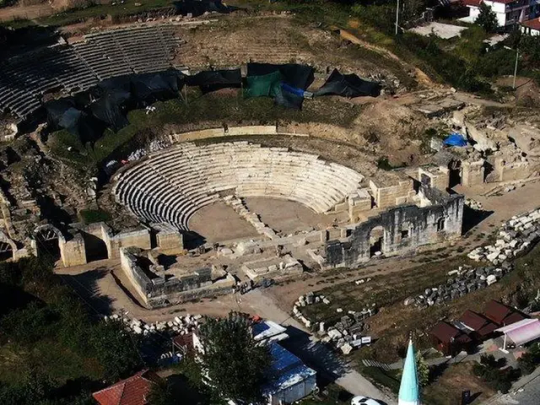
#Marble Head of Alexander the Great Uncovered in Turkey#ancient city of Konuralp#Konuralp Ancient Theater excavation area#marble#marble sculpture#ancient marble sculpture#ancient artifacts#archeology#archeolgst#history#history news#ancient history#ancient culture#ancient civilizations#roman history#greek history#ancient art
279 notes
·
View notes
Text
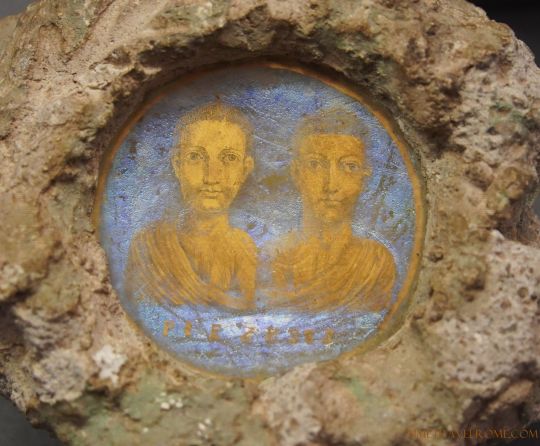
"Gold-glass portrait of two young men from the Museo Civico Archeologico in Bologna. Produced in the 1st quarter of 4th century, it bears a Latin transcription of Greek: PIE ZESES, or "Drink and you will live". This particular double portrait was pressed into the fresh mortar on the burial niche - the remains of the mortar can still be seen. Glass portraits were produced placing & fusing gold leaf between two layers of glass. First found in Hellenistic Greece, they became characteristic of the Roman glass of the Late Empire in the 3rd and 4th century AD."
Text and photography by Time Travel Rome
62 notes
·
View notes
Text
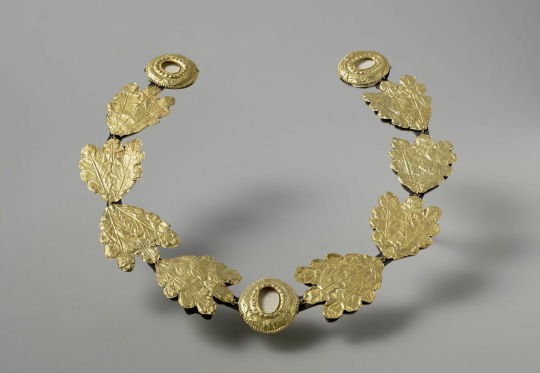
~ Crown.
Date: A.D. 175-225 (4th quarter 2nd century AD; 1st quarter 3rd century AD)
Place of origin: Syria
Period: Imperial Roman
#ancient#ancient art#history#museum#archeology#ancient history#archaeology#ancient jewelry#crown#roman#imperial Period#2nd century#3rd century#a.d. 175#a.d. 225
522 notes
·
View notes
Text
Calendar manipulation in Ancient Greece
This really isn’t a topic I’m thrilled to tackle, but since the Theogamia there has been so much talk about calendar discrepancies that it looks like the right time to bring this up. Don’t expect this to be eloquent, I’m writing this while absolutely knackered.
I’m not going to focus too much on the problem of modern calendar reconstructions, what I’ll be going into here is the historical evidence we have about how awfully inconsistent the ancient Athenian calendar could be, either by nature or by human intervention over time.
The problem of the new moon
In theory, the Athenian calendar and other Greek calendars are lunar and each month begins on the new moon. Sacha Stern, in Calendars in Antiquity, tells us that the writer Geminus (1st c. BCE), states that the Greek month began when the new moon crescent was first sighted but Geminus also states that the new moon can sometimes be sighted on the 1st of the month, but sometimes not until the 3rd. This statement is interesting, because it implies that, should the moon not be visible (clouds), there was a mathematical basis to the calculation of the months that still made the month begin regardless of what the sky looked like.
There comes also the problem of conjunction (aka when the moon in orbit passes between the sun and the earth, making the moon invisible). The traditional ancient assumption is that the day of conjunction is the last day of the month. However, the interval between the day of conjunction and of the new moon is usually around two days; so if the month began when the new moon was first sighted, conjunction should have been typically on the penultimate day of the previous month.
Those difficulties, along the fact that other authors, such as Aratus give conflicting information leads Stern to say this:
Modern scholars have generally accepted Geminus’ statements that the Greek month began at first visibility of the new moon. However, it is clear on Geminus’ own evidence, as well as on the evidence of the other passages just mentioned, that this rule was not strictly followed, and indeed, quite possibly, that it did not constitute a rule. Moreover, we do not know of any procedure that may have been used, and indeed that would have been necessary, for such a rule to be enforced. There is no evidence, for example, in the whole of Graeco-Roman literature of anyone sighting the new moon.
And this leads us to the rather uncomfortable idea that, in practice, a lot of the calendars simply might not have been as well aligned with astronomical moon phases in the way we conceptualize it today.
Francis M. Dunn, in an article titled Tampering with the Calendar, lists passages from ancient Greek sources that seem to corroborate this idea:
Thucydides 2.28 in a passing mention of a solar eclipse […] distinguishes the astronomical "new moon" or conjunction, at which eclipses must occur, from the conventional "new moon" or noumenia, which followed the first visible crescent. The historian, in other words, is aware that there is an astronomical "new moon" or conjunction which is different from the first day of the civic month.
Man-made adjustments
Because calendars impacted the religious, civic and political lives of each city-states, it wasn’t uncommon for city-states to make adjustments to them.
The type of modification we’re most used to is the addition of intercalary days or month that aim to realign the calendar with astronomical reality. But we have evidence that this isn’t the only motivation.
For example:
In the 430's (SEG XXXVI 12), 420's (SEG XL 12) or 410's (SEG XLII 17), in connection with offerings at Eleusis, the demos instructed the archon to add a second Hekatombaion.
In 228/7 a second Hekatombaion was added to the civic calendar.
Between 294 and 288, in connection with a tour by artists of Dionysus during Lenaion, four cities in Euboea made provision for the archons to add months as necessary.
At the end of the fourth century, probably in 307/6, two days were apparently added near the end of Gamelion.
In 271/0 four days were added in the first decade of Elaphebolion.
As we can see, additions and subtractions of one or several days, if not sometimes months, could happen. They were often added either at the beginning of a month or at the end of a month, which makes it easier to imagine that it could be done to readjust the calendar to the moon, but in the cases where it was linked to a festival, it was clearly done to schedule said festival:
”Of the three cases of intercalary months, two are explicitly related to religious festivals (the dedication of first fruits at Eleusis, IG I3 78; and dramatic festivals in Euboea, IG xii.9 207”
“The evidence therefore supports an assumption that most adjustments were part of the normal operation of the civic calendar - ensuring that the calendar was roughly in phase with sun and moon, and ensuring that festivals would take place at a necessary or convenient time.”
An insoluble debate
The problem of ancient Greek calendars as a whole has been a point of contention among scholars for so long, for the simple reason that it makes dating anything difficult. The most notable example is the one around the differences between the Athenian calendar and the Spartan one when it comes to dating something like the battle of Marathon. Plutarch tells us it was on the 6th of Boedromion, but Herodotus tells us it was during the full moon (and therefore later, if the calendars matched the lunar cycle). This is where the issue of inter-city calendar alignment emerges, since each city-state functioned in their own independent ways, they could resort to calendar adjustments at any time they wanted and further misaligning themselves with one another.
But scholars don’t necessarily agree! Some, like Pritchett believed that the calendars were irregular no matter what, while others like Meritt believed they were regular, and that the evidence of irregularity was due to exceptional circumstances. The problem at this point is that it is much harder to prove regularity than the opposite.
So where does it leave us?
The reconstructed calendars we use today as modern worshippers are all based on some form of regularity, but we need to remember that none of them are a direct continuation of the ancient calendars. For the most part, they are based on the metonic cycle and on the other luni-solar calendars in use today by various faiths and cultures around the world. In fact, a lot of the reconstructions of Athenian calendars are using the same mathematical model as the Hebrew calendar. And that, in a nutshell, explains why different reconstruction have different results when it comes to placing specific days and festivals. So it really comes down to personal choice. Choosing a calendar that is more “popular” might be more appealing to you for particular reasons, while others might choose their calendar based on entirely different criteria. I guess the point I’m trying to get to is that, there won’t be a “standard” calendar without some kind of wide decision to stick to a precise model, and as long as there is no religious authority, the calendars will remain ever so slightly different, because they never really were regular in the way that we understand our solar Gregorian calendar to be.
76 notes
·
View notes
Text


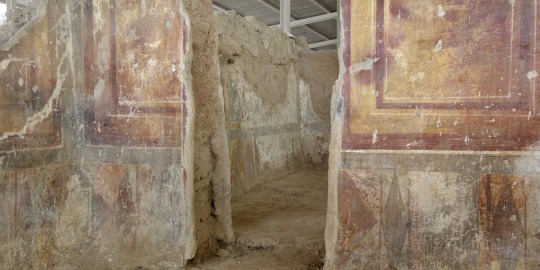


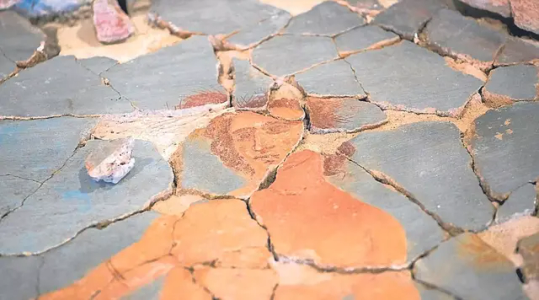
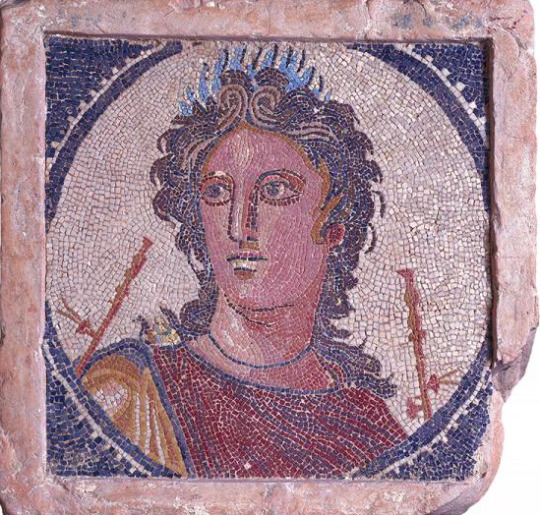



Vil·la romana dels Munts (Els Munts Roman Villa) is one of the best preserved Roman villas in the Iberian peninsula, the Roman province of Hispania. It's located in modern-day Altafulla (Camp de Tarragona, Catalonia), in the countryside near the important Roman city of Tarraco (modern-day Tarragona). The villa's archaeological remains are included in the UNESCO World Heritage Site "Archaeological Ensemble of Tarraco".
The oldest part of the villa dates from the 1st century AD, when it was a small farming villa, but it was soon abandoned. In the early 2nd century AD, the old villa was demolished and the place was rebuilt as a large, aristocratic villa: it still kept having a significant agricultural role, but included a magnificent and luxurious residence area. To get an idea of how luxurious it was, a normal 2nd-century Roman villa might have one marble covering, while Els Munts has hundreds of coverings made of marble imported from the Eastern Mediterranean and the North of Africa. The residence also had wall paintings, mosaic floors, statues, fountains, and artificial ponds. The villa also included a bath house and a the largest temple of the Mithraic religion known in the Western Roman Empire.
When the Roman emperor Hadrian stayed in Tarraco the winter of 122-123 AD, it's thought that this villa could have been the place where he was staying. A statue of Antinous (Hadrian's lover) was found in Els Munts.

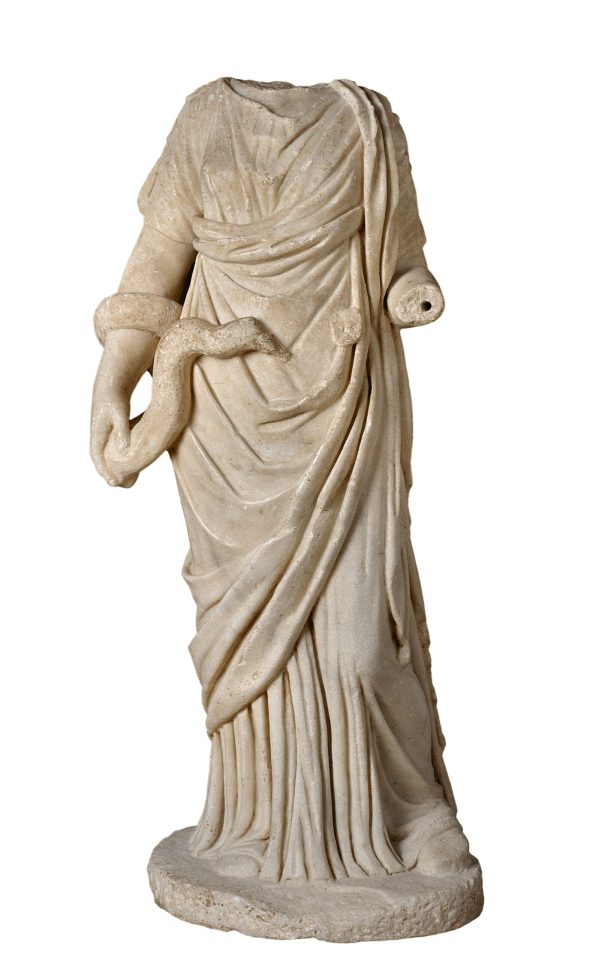

Statue of Antinous, Higea, and Asclepios found in Els Munts. Nowadays in Museu Nacional Arqueològic de Tarragona.
The villa was partially destroyed by a fire in the late 3rd century, starting its decline. In the early 5th century, it was remodelled into a Late Roman villa and then a Visigothic one, and was in use until the 7th century.
Photos by Quim Roser/Dep. Cultura, ArqueoXarxa, Manel Antolí/Tarragona Turisme, Tjerk van der Meulen/Ara, MNAT - Google Arts and Culture. Drawing reconstruction by Hugo Prades/MNAT. Information from Museu Nacional Arqueològic de Tarragona and Ara (Josep Anton Remolà).
#vil·la romana dels munts#arqueologia#història#altafulla#catalunya#arts#archaeology#archeology#ancient rome#ancient roman#antinous#emperor hadrian#ancient#antiquity#roman empire#mosaic#catalonia#europe#travel#travel photography
86 notes
·
View notes
Text


Gold ring with garnet intaglio of Aesclepius, Roman, 1st-3rd century AD
from Apollo Art Auctions
745 notes
·
View notes
Text

Achilles goblet made of colourless glass with polychrome painting. Height 24.5 cm. 1st half of the 3rd century AD, was found at Richard-Wagner-Strasse 47, in 1991 in Cologne, Germany
The color of the brilliant paint was as fresh as if it had just been applied. The scene painted on glass depicts the "unveiling" of Achilles on Skyros Island. Odysseus managed to find and expose Achilles, who was hidden among daughters of King Lycomedes on Skyros Island. He then took him to the war against Troy, where Achilles was no longer expected to have a peaceful marriage with Déidameia.
34 notes
·
View notes
Text

Gold, pearl earrings, Roman, 1st-3rd century AD
from the RISD Museum
391 notes
·
View notes
Text
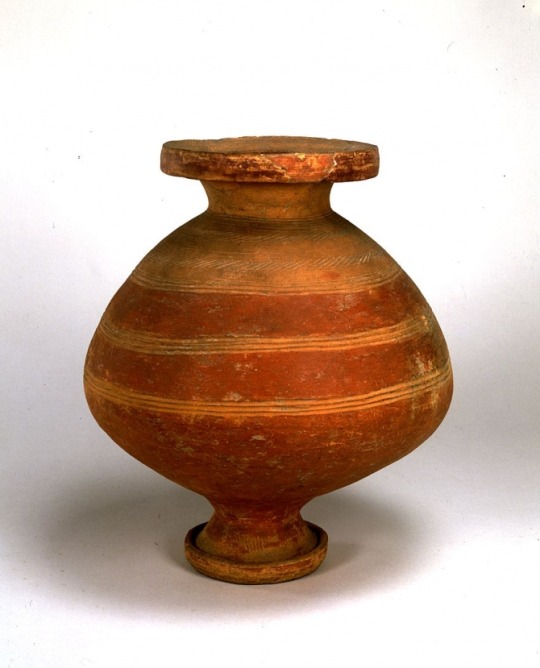
Jar, 1st-3rd century AD, Neolithic Japan.
53 notes
·
View notes
Text
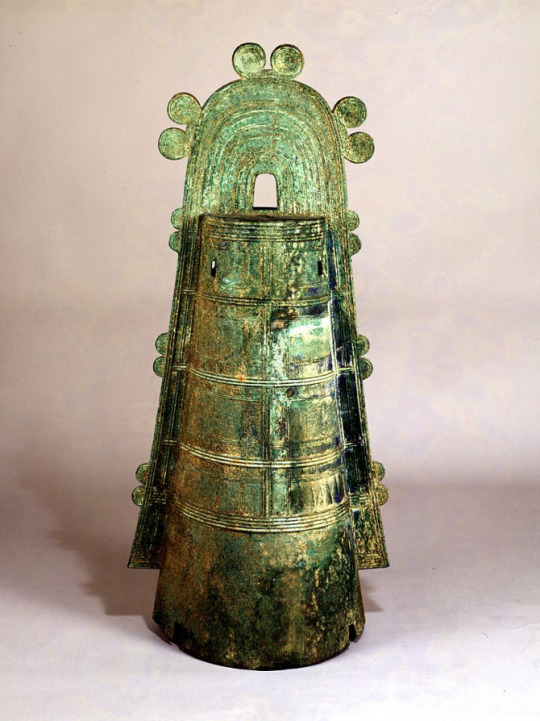
Bronze bell, Japan, Yayoi Period, 1st-3rd century AD
from The Tokyo National Museum
741 notes
·
View notes